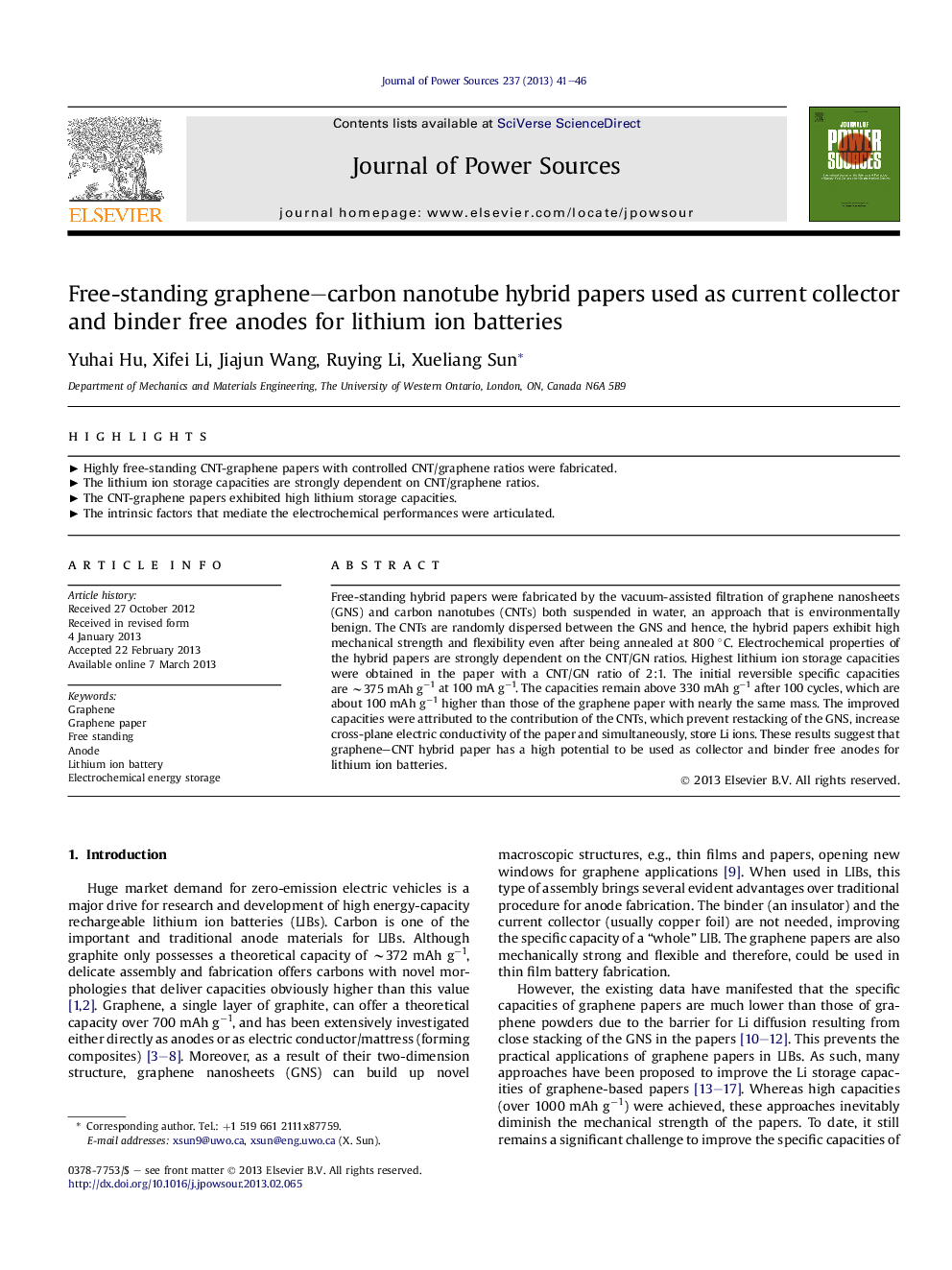| Article ID | Journal | Published Year | Pages | File Type |
|---|---|---|---|---|
| 1287711 | Journal of Power Sources | 2013 | 6 Pages |
Free-standing hybrid papers were fabricated by the vacuum-assisted filtration of graphene nanosheets (GNS) and carbon nanotubes (CNTs) both suspended in water, an approach that is environmentally benign. The CNTs are randomly dispersed between the GNS and hence, the hybrid papers exhibit high mechanical strength and flexibility even after being annealed at 800 °C. Electrochemical properties of the hybrid papers are strongly dependent on the CNT/GN ratios. Highest lithium ion storage capacities were obtained in the paper with a CNT/GN ratio of 2:1. The initial reversible specific capacities are ∼375 mAh g−1 at 100 mA g−1. The capacities remain above 330 mAh g−1 after 100 cycles, which are about 100 mAh g−1 higher than those of the graphene paper with nearly the same mass. The improved capacities were attributed to the contribution of the CNTs, which prevent restacking of the GNS, increase cross-plane electric conductivity of the paper and simultaneously, store Li ions. These results suggest that graphene–CNT hybrid paper has a high potential to be used as collector and binder free anodes for lithium ion batteries.
► Highly free-standing CNT-graphene papers with controlled CNT/graphene ratios were fabricated. ► The lithium ion storage capacities are strongly dependent on CNT/graphene ratios. ► The CNT-graphene papers exhibited high lithium storage capacities. ► The intrinsic factors that mediate the electrochemical performances were articulated.
